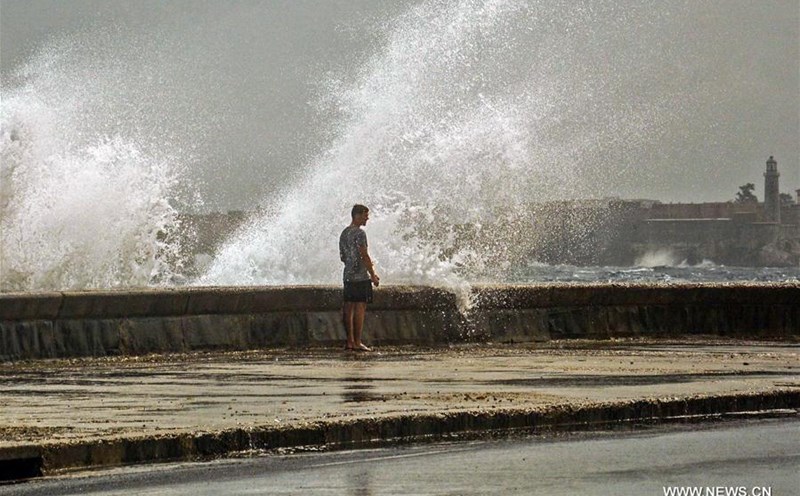Fox News' latest hurricane report says the Atlantic hurricane season won't officially start until June, but forecasters will monitor the Caribbean Sea in the second half of May to detect any signs of storms or tropical depressions forming before the hurricane season.
computer model forecasts show that a large low pressure area could form near Central America by the end of next week and last until the end of next week.
"There is consensus from many computer models' forecasts that a large low pressure area will form from the Pacific Ocean through Central America to Colombia," said Fox Weather forecaster Bryan Norcross.
The official hurricane season before and after - which lasts from June 1 to the end of November - is likely to see early or late tropical weather patterns in the Caribbean Sea, eastern Pacific, Campeche Bay (southwest of the Gulf of Mexico) or the western Caribbean.
However, Norcross warned that the possibility of any system moving north or northeast into the southern Gulf of Mexico as a tropical depression or storm is very low.
Early forecasts for the 2025 Atlantic hurricane season show that this year's hurricane season is likely to strengthen above average. If there are storms and depressions forming before June, it will further strengthen forecasters' confidence in worrying predictions about the developments of this year's hurricane season.
In the hurricane forecast from Colorado State University (CSU), US, released on April 3, this year's hurricane season is expected to have 17 named storms, of which 9 are expected to strengthen into hurricanes. Four of these storms could reach major hurricane status, with winds of nearly 180 km/h or more.
CNN's latest hurricane report says recent trends suggest this year's hurricane season is coming early. Several forecast models have suggested the possibility of typhoon formation in the western Caribbean.
The bulletin shows that in the past 10 years, there has been at least 1 named storm formed before June 1 every 7 years. Meanwhile, from 2005 to 2014, there were only 3 years of early storms.
There were even two named storms early, in 2012, 2016 and 2020. 2020 alone saw nearly three typhoons early, with Tropical Storm Cristobal forming on June 1.
CNN pointed out that an early start to the season does not mean more storms will occur. Early storms are typically due to entering unusually warm waters in the Atlantic, Caribbean or Gulf of Mexico in the spring.
Warm ocean waters act as storm fuel, providing heat and moisture, making storms stronger. The warmer the ocean, the greater the energy the storm provides.
The typhoon season in the eastern Pacific has also occurred early in recent years, although not as frequently as in the Atlantic.
Part of the reason is that the typhoon season in the eastern Pacific started two weeks earlier, on May 15. Over the past 20 years, the eastern Pacific basin has had only three tropical storms named before the first day of the hurricane season, including Andreas in 2021, Adrian in 2017 and Aetta in 2012.
Another reason is the connection between the two basins and the formation of the storm. In general, when the Atlantic basin is more active, the Pacific basin is weaker due to a number of factors, including El Nino and La Nina.











